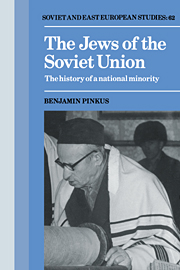4 - THE POST-STALIN PERIOD, 1953–1983
Published online by Cambridge University Press: 22 September 2009
Summary
The post-Stalin period is perhaps the most complex of all. Elements of Stalin's policy mingle with previous policy in so complicated a way that it is hard both to separate them and to trace the connections between them. The variables are numerous: the struggle for power inside the country itself; relations with the other socialist States and with the West; internal pressures by anti-Stalinist forces; attempts at reform of one kind or another; and the entanglements of Soviet Middle Eastern policy.
The relatively large quantity of material available to the researcher for this period can also be a hindrance. It provides a basis for comparison with the Stalin period, but it is difficult to master the whole field. Contemporary historical events also make it difficult for the researcher to achieve the necessary objectivity in treating such a sensitive subject.
Periodization is also a problem. It is possible to refer to sub-periods by the names of the leaders – Khrushchev, Brezhnev, Andropov – or to refer to sub-periods according to internal developments in Soviet Jewry; but both methods are one-sided. What is needed is a combination of developments connected with the overall nationalities problem in general and of the extra-territorial national minorities, including the Jews, in particular.
In the various sections of this chapter, the following periods will be discussed
The first transition, 1953 to 1955.
[…]
- Type
- Chapter
- Information
- The Jews of the Soviet UnionThe History of a National Minority, pp. 209 - 321Publisher: Cambridge University PressPrint publication year: 1988



